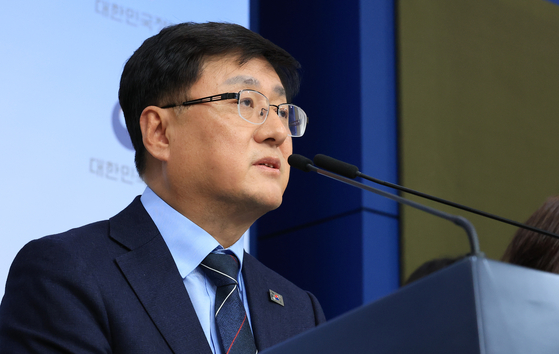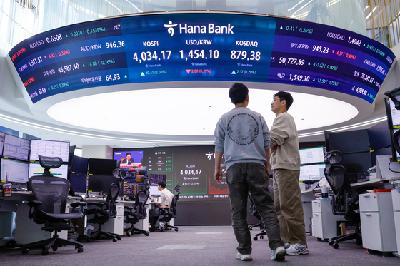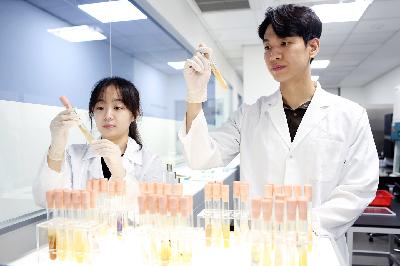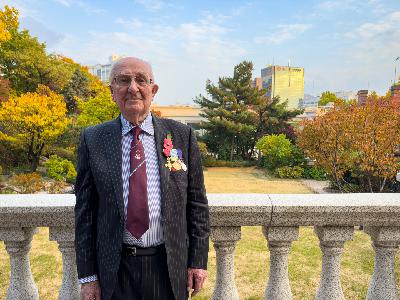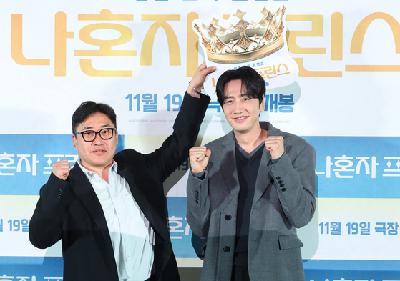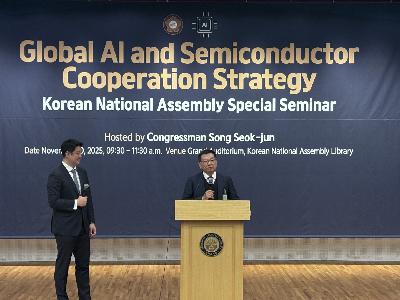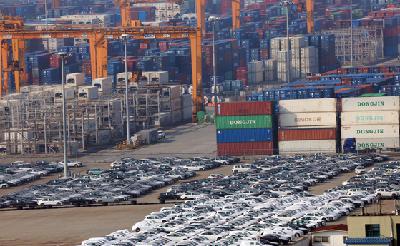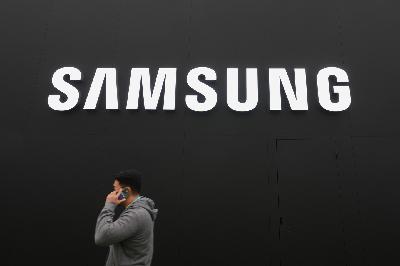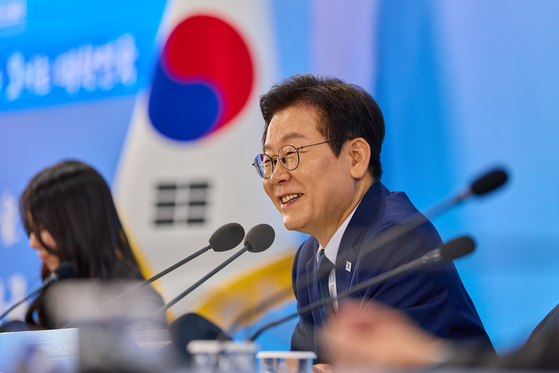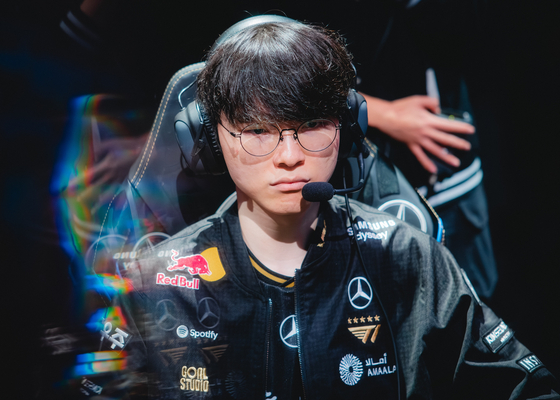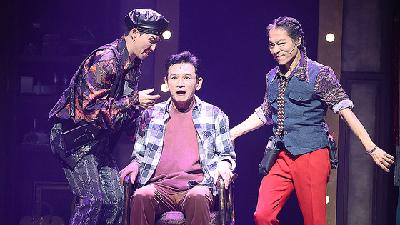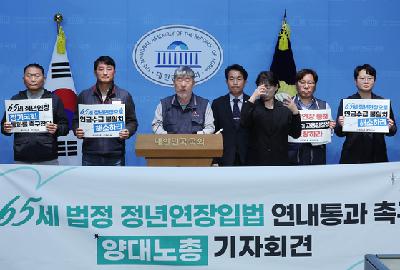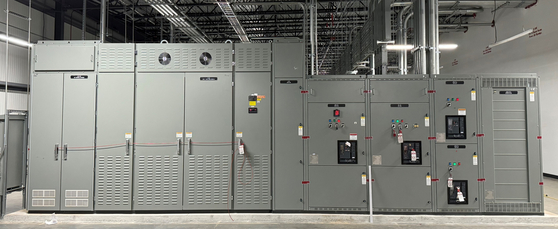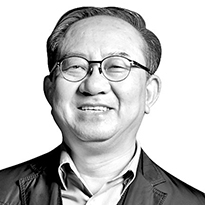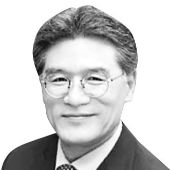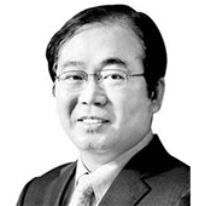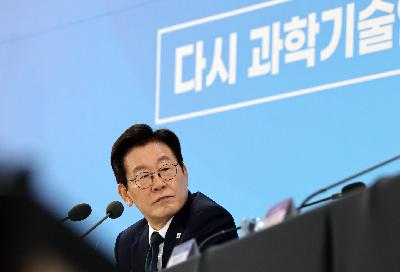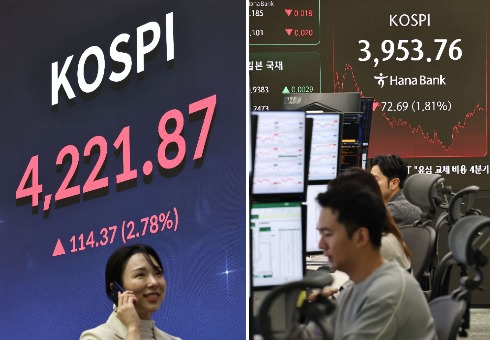Discover Korea JoongAng Daily - Daily News from Korea
Korea JoongAng Daily - Daily News from Korea

Korea JoongAng Daily - Daily News from Korea
Author: Newsroom of the Korea JoongAng Daily
Subscribed: 44Played: 7,030Subscribe
Share
© JoongAng Daily Co., Ltd.
Description
Audio recordings of the Korea JoongAng Daily's in-depth, on-the-scene news articles and features informing readers around the world of the issues of the day in Korea.
Under the slogan "Your window to Korea", the Korea JoongAng Daily is an English-language news organization focused on Korea that strives to publish factual, timely and unbiased articles.
Under the slogan "Your window to Korea", the Korea JoongAng Daily is an English-language news organization focused on Korea that strives to publish factual, timely and unbiased articles.
4568 Episodes
Reverse
This article is by Shin Ha-nee and read by an artificial voice.
K-pop has just leaped over the Grammy's notoriously high barrier for the genre: Blackpink's Rosé scored three nominations, Netflix's animated film "KPop Demon Hunters" landed five and girl group Katseye, though not strictly a K-pop act, earned two.
While the prospect of a win under the broader "K" banner appears stronger than ever, critics suggest that this year's nominations mark more of an evolution than a breakthrough for K-pop, reflecting how the genre has adapted to the U.S. music landscape, especially due to the somewhat surprising recognition of Katseye.
The announcement of the 68th Annual Grammy Awards nominees was livestreamed by the Recording Academy on Saturday. This year's nominations mark a milestone for K-pop, as artists and works tied to the K-pop ecosystem were nominated for three of the so-called "Big Four" categories: Song of the Year, Record of the Year, Album of the Year and Best New Artist.
Up until now, BTS had been the only K-pop act to ever be nominated for the Grammys - specifically Best Pop Duo/Group Performance and Best Music Video - aside from soprano Sumi Jo and sound engineer Hwang Byung-joon's earlier wins. It was also credited as a featured artist in Coldplay's "Music of the Spheres," which was nominated for Album of the Year at the 65th Grammys, for their contribution to the song "My Universe" (2021). The boy band has yet to take home a trophy.
Rosé's viral megahit "APT." (2024), a collaboration with Bruno Mars, is up for Song of the Year, Record of the Year and Best Pop Duo/Performance. "Golden," a chart-sweeping standout track from Netflix's smash hit "KPop Demon Hunters," received nominations for Song of the Year, Best Pop Duo/Performance, Best Song Written for Visual Media and Best Remixed Recording. The film's soundtrack album was nominated for Best Compilation Soundtrack for Visual Media as well. The Korean American musical "Maybe Happy Ending" is also competing for Best Musical Theater Album.
Perhaps the most surprising new contender is HYBE's rookie girl group Katseye, nominated for Best New Artist and Best Pop Duo/Group Performance with its June single "Gabriela."
A victory for "APT.," "Golden" or Katseye could make history as the first Grammy for an artist or work directly involved with the broader K-pop ecosystem.
"Both 'APT.' and 'Golden' have been massively popular in the United States for a long time, and across a broad demographic, not certain, specific groups," said music critic Lim Hee-yoon, suggesting that the probability of a Grammy win appears to be greater than ever this time.
Pop culture critic Kim Heon-sik echoed the sentiment, noting that the one thing all K-related nominees share is their collaboration with U.S. industry players.
"The songs' visibility in the U.S. market, supported by local producers, will certainly make the works more familiar, and therefore likely to draw votes from members of the Recording Academy," Kim said, adding that the increasing diversity of the Academy's members will also work in favor of the nominees.
Katseye's breakthrough into the lineup, in particular, highlights how K-pop's production model has evolved well beyond its origins.
The sextet, which debuted last year, was formed through the audition program "The Debut: Dream Academy" and is currently managed by HYBE UMG, a joint venture between the K-pop powerhouse and Universal Music Group's Geffen Records. Branded as a "global girl group," Katseye includes members from the United States, Korea, the Philippines and Switzerland.
Katseye has enjoyed a successful year so far, with "Gabriela" peaking at No. 37 on the Billboard Hot 100 chart. The group is set to kick off its first U.S. tour, titled "Beautiful Chaos," on Saturday, spanning 13 cities and 16 shows through December. As of November, Katseye has 33.4 million monthly listeners on Spotify, rivaling Blackpink's 27.1 million listeners, Rosé's 34.2 million and BTS's 24.4...
This article is by Sarah Chea and read by an artificial voice.
Korea is pressing ahead with plans to set its 2035 greenhouse gas reduction target at a range of 53 percent and 61 percent compared to 2018 levels - a lower end five percentage points higher than what industry groups had initially proposed - despite the business sector's continuous outcry about fears of heightened costs and an expanded threat posed by China's low-price offensive.
The Presidential Commission on Carbon Neutrality and Green Growth on Monday voted for the target, a day after the government and the Democratic Party reached a consensus on the rate. Only confirmation from the Cabinet on Tuesday is required for its unveiling at the 30th United Nations Climate Change Conference of the Parties, or COP30, in Brazil and its submission as a final draft to the UN Framework Convention on Climate Change next month.
Under UN rules, all countries that are party to the Paris Agreement are required to update their emissions reduction targets, known as Nationally Determined Contributions, or NDC, every five years.
The government has based its target on Korea's 2018 net emissions of 742.3 million tons, aiming to reduce that figure to between 348.9 million tons for a 53 percent cut and 289.5 million tons for a 61 percent cut by 2035. Unlike the previous announcement, which set a single reduction rate, the new framework establishes both lower and upper bounds.
The power sector has set a maximum reduction target of 75.3 percent compared with 2018 levels, focusing on cutting coal-based emissions and expanding the share of renewable energy. To achieve this, renewable capacity, including solar, is planned to reach 100 gigawatts by 2030.
The industrial sector has been assigned a target of 24.3 to 31 percent. The construction sector aims for a maximum 56.2 percent reduction through the expansion of zero-energy buildings and green retrofitting of aging structures. The transportation sector seeks to cut up to 62.8 percent by expanding zero-emissions vehicles and improving internal combustion engine efficiency.
"We are aware of the difficulties the industrial sector is facing, but setting the target as a range for the first time reflects our effort to reach a social consensus," said Climate Minister Kim Sung-hwan during a press briefing in the government complex in central Seoul on Monday. "Of around 12 experts in the deliberation, none of the private-sector commissioners opposed it."
Meanwhile, the commission also approved the national emissions allowance plan for the fourth phase, covering 2026 to 2030. The proportion of buyable allowances in the power sector will be gradually raised to 50 percent by 2030, while industries vulnerable to carbon leakage such as steel and petrochemicals will continue to receive free allocations.
Despite these assurances, manufacturers in sectors directly affected by the target such as automobiles, semiconductors and steel remain deeply concerned that the substantial costs could ultimately result in job losses and weakened industrial competitiveness.
Fourteen industry groups representing the business sector, including the Korea Chamber of Commerce and Industry and the Federation of Korean Industries, issued a joint statement after the commission's announcement, arguing that the target will "place a significant burden on industry, particularly given the urgent need to respond to changes in the global economic environment, such as U.S. trade policies, and the fact that reduction technologies in the industrial sector have yet to be fully commercialized."
"Given industry concerns over increased electricity demand and potential rate hikes stemming from expanded energy transition efforts in the AI era, the government should restrain expected electricity price increases as much as possible and provide advance notice of any adjustments to allow companies to prepare adequately."
Automakers and auto parts makers, in particular, are uneasy with the target...
This article is by Yeom Ji-hyeon and read by an artificial voice.
The won-dollar exchange rate soared to the 1,460 range for the first time in seven months.
The won closed at 1,461.5 per dollar in overnight trading on Friday, according to the Seoul foreign exchange market on Sunday. This marks the weakest won value since April 9 - during the height of the U.S. trade war - when it ended at 1,472.
The won strengthened slightly against the dollar on Monday. The exchange rate was quoted at 1,451.4 won against the greenback at 3:30 p.m., down 0.38 percent from the previous session's 3:30 p.m. quote of 1,456.9 won.
The won was the weakest major currency last week. Based on overnight closing prices, the won lost 28.5 won, or roughly 2 percent, from 1,433 per dollar at the end of October.
The U.S. dollar index, which measures the greenback's value against six major currencies, rose only 0.15 percent during the same period, according to the Wall Street Journal. The won value, however, fell sharply.
A major reason for the won's devaluation was a sharp exit by foreign investors from the Korean market. Offshore investors sold 7.15 trillion won ($4.92 billion) in Kospi stocks in the first week of November, the largest weekly net sale on record, according to the Korea Exchange.
"The won has been losing steam as foreign investors take profits en masse from the Kospi after it surged in the lead-up to the recent APEC Economic Leaders' Meeting," said Baek Seok-hyun, an economist at Shinhan Bank.
Structural changes, such as retail investors' rush into foreign stocks, have added pressure on the won as well. Individual Korean investors made a net purchase of $6.81 billion worth of overseas stocks in October, according to the Korea Center for International Finance. That figure is 2.5 times higher than September's net buying total of $2.77 billion and is the highest since data collection began in 2011.
"The surge in overseas investment by retail investors and pension funds and companies' direct investments abroad is accelerating the outflow of dollars from the domestic market," said Lee Min-hyuk, an economist at KB Kookmin Bank. "That's why the won is weakening despite a current account surplus."
The outcome of the Korea-U.S. tariff negotiations has also weighed on the forex market. Korea is committed to investing a total of $200 billion in the United States over the next decade, and concerns persist that $20 billion in annual investments will undermine the won's fundamentals.
Adding to the concerns is the fact that one of the government's proposed methods for raising investment funds - entrusting foreign exchange assets to external managers - has yielded negative returns once every four years, according to data from Rep. Cha Gyu-geun's office at the Rebuilding Korea Party.
The forex market is now closely watching whether the won will break through the short-term resistance level of 1,480 per dollar. The weakest weekly closing price of the won this year was 1,484.1, recorded on April 9.
If the current depreciation continues through the end of the year, the "1,400 won level" may become the new normal. As of Friday, the average weekly closing price of the won this year stood at 1,414.2 per dollar. That represents a 49.8 won decrease in currency exchange rate compared to last year's annual average of 1,364.4.
"If the United States halts its interest rate cut rally, the won could break past 1,480 and even hit the 1,500 level," said Park Hyung-jung, an economist at Woori Bank. "Companies need to fully factor exchange rate variables into their plans for next year."
However, Park Sang-hyun, an economist at iM Securities, offered a more optimistic outlook.
"Domestic economic indicators remain solid, which means foreign capital will likely flow back into the market," he said. "At the very least, the 1,480 won level will serve as the bottom line for the rest of the year."
Updated, Nov. 10, 2025: Added rate at market close.
This article was originally wr...
This article is by Noh Yu-rim and read by an artificial voice.
Korean cosmetics original design manufacturers (ODMs) continued to post strong results in the third quarter, driven by steady global demand for K-beauty products and a growing overseas client base.
Global cosmetics ODM firm Cosmax reported third-quarter sales of 585.6 billion won ($403 million) and an operating profit of 42.7 billion won. Revenue rose 10.5 percent from a year earlier, while operating profit slipped 1.6 percent.
"A surge in domestic indie beauty brand clients contributed to revenue growth, but higher initial service costs temporarily weighed on profit," a Cosmax representative said.
Sales from Korean operations climbed 10.3 percent to 383.5 billion won, led by robust skincare demand, especially for hydrogel sheet masks and sun care products. Sun care sales alone jumped 80 percent on year, fueled by new product types - like sun serums - gaining traction in Korea and abroad.
Among Cosmax's overseas units, its operations in China and the United States stood out. Revenue from its Chinese subsidiary reached 140 billion won, up 22 percent from the previous year, while the U.S. arm brought in 36.9 billion won, up 13.6 percent.
"Recovery is evident in key markets like China and the United States," the Cosmax representative added. "Growth in China was driven by major clients launching new products and diversifying sales channels, and the U.S. operation benefited from the influx of new clients at the end of last year."
Kolmar Korea, another leading cosmetics ODM firm, reported record-breaking quarterly results on Friday, continuing its growth from the previous quarter.
Kolmar Korea posted a consolidated revenue of 683 billion won in the third quarter, up 9.02 percent on year. Operating profit rose 6.95 percent to 58.3 billion won.
The strong performance was led by its Korean unit, which, on a standalone basis, posted a third-quarter revenue of 322 billion won and operating profit of 44.3 billion won - an 18 percent and 19 percent growth, respectively.
"A spike in overseas demand for skincare brands significantly boosted export performance this quarter," said a Kolmar Korea spokesperson. Skincare products accounted for 49 percent of the company's product mix in the third quarter.
However, the company's U.S. operations struggled. Revenue at its American subsidiary fell 54 percent on year to 8.1 billion won, and operating losses widened to 6.4 billion won.
The company explained that its first U.S. plant, which mainly produces color cosmetics, saw lower utilization due to reduced orders from its largest client. Its second plant, which began trial operations in June, experienced delayed orders due to concerns about U.S. tariffs.
"There were temporary cost increases due to trial runs at the second plant. Changes in order schedules by key clients also impacted performance," the company said. "We expect profitability to improve once the second plant becomes fully operational and we secure more clients."
Both companies are aiming to sustain momentum into the fourth quarter, anticipating a seasonal boost in cosmetic demand.
"We are focused on new product development and production for major global shopping events like China's Singles' Day and the United States' Black Friday," said a Cosmax representative.
"We're concentrating on R&D to support clients' global competitiveness and expanding our sales network by leveraging overseas production sites," said a Kolmar Korea spokesperson.
This article was originally written in Korean and translated by a bilingual reporter with the help of generative AI tools. It was then edited by a native English-speaking editor. All AI-assisted translations are reviewed and refined by our newsroom.
This article is by Michael Lee and read by an artificial voice.
As sunlight streamed through the stained-glass windows of the Seoul Anglican Cathedral, diplomats, military personnel and congregants from some 20 nations filled the pews, red paper poppies pinned to their lapels.
The hush of Remembrance Day - a moment of silence stretching back more than a century - settled over the historic church in Jeong-dong, central Seoul, which each year hosts a service of commemoration for the war dead that is organized by the British Embassy next door.
The annual service has become a focal point for the community of nations that contributed troops and medical support to South Korea, honoring both victims and heroes of war.
For Cmdr. Charles Wylie, a British Korean War veteran seated among the congregation, the service was a personal ritual. The 91-year-old former naval officer had come to South Korea at the invitation of Seoul's Ministry of Patriots and Veterans Affairs, marking his first visit to the country whose coastlines he once patrolled as a teenage sailor.
"I never set foot in Korea during the war," Wylie said softly. "To stand here now, in peace - it's extraordinary."
A ritual that crosses oceans
Remembrance Day, as it is officially known in Britain and many Commonwealth nations, has its roots in the armistice that ended World War I. The first official observance took place on Nov. 11, 1919, when King George V called for a two-minute silence at Buckingham Palace to honor Britain's fallen troops.
While ceremonies originally took place on the anniversary of the armistice, which took effect at 11 a.m. on Nov. 11, 1918, church commemorations were moved in 1945 to the second Sunday of the month to honor fallen troops and veterans of both world wars.
Central to the tradition is the red poppy - the small paper flower pinned to lapels across Britain and Commonwealth countries in the days leading up to Remembrance Day.
Inspired by the poppies that grew over the battlefields of Flanders in Belgium, the emblem was adopted by the Royal British Legion in 1921 to raise funds for veterans. Today, poppies remain a symbol of remembrance, renewal and the enduring cost of war.
Though the ritual of Remembrance Day began in Britain, it has long since spread to other nations whose soldiers served alongside British troops during World War I. Similar services now take place from Auckland to Nairobi, from Cape Town to Ottawa - and, every year, in Seoul.
Resonance in Korea
In South Korea, the service carries a unique local resonance. The peninsula still bears the imprint of the 1950-53 Korean War, which remains technically unresolved. Britain, then newly emerged from World War II, sent more than 80,000 troops under the United Nations flag - the second-largest contingent after the United States. More than 11,000 were killed or wounded.
The Seoul Anglican Cathedral, built in 1926, bears the scars of that war. Several members of its clergy were martyred during the conflict. Their memory - alongside those of the soldiers who fought under the UN banner - is commemorated each year at the service, as well as by a plaque unveiled by King Charles III during his visit to Korea as Prince of Wales in 1992.
"This is not just a British occasion," said British Ambassador to Korea Colin Crooks, who delivered the first reading from the Book of Micah during the service. "We invite members of all the nations that shared in the sacrifice of the Korean War as well as the world wars. That's why you see countries represented here that aren't part of the Commonwealth."
The multinational nature of Sunday's service was highlighted by the presence of ambassadors, defense attaches and representatives from Australia, Belgium, Canada, Germany, Ghana, Ireland, Kenya, Luxembourg, Malaysia, New Zealand, Nigeria, Papua New Guinea, Poland, South Africa, Tanzania and Zambia, as well as veterans, military families and students from Dulwich College Seoul.
While the Act of Remembrance an...
This article is by Kim Ji-ye and read by an artificial voice.
Actor Lee Kwang-soo is bringing his real-life persona to the big screen in the upcoming comedy film "Love Barista," playing an "Asia Prince" role - a nod to the nickname he earned across Southeast Asia.
"[The nickname, 'Asia Prince,'] actually started in Vietnam, so the country is very meaningful to me and I feel grateful toward it," said Lee during the film's press conference held on Monday in Yongsan District, central Seoul. "That's why I wanted to do even better this time and show a better side of myself."
Directed by Kim Sung-hoon, who helmed "Confidential Assignment" (2017), the film follows top Korean star Kang Jun-woo, portrayed by Lee, who is lost in Vietnam without his manager, passport or money. There, he encounters an ordinary Vietnamese barista, Thao, played by Vietnamese actor Hoàng Hà, and the two slowly grow close.
Jun-woo, as a top star in Korea and across Asia, mirrors some aspects of Lee's own celebrity life. Director Kim, who has known Lee for over a decade and worked with him on "My Little Hero" (2013), considered him for the role from the very start of the project.
"I thought it would be really fun to have a fresh, Hallyu [Korean Wave]-style star like him play the role of an Asian top celebrity," the director said. "Above all, I wanted to tell a long, layered story with him."
He also added that Jun-woo's image has some similarities to the familiar images of Lee that audiences have seen on variety shows.
While portraying a top star, Lee revealed that he relates to the character's ongoing contemplation and concerns about losing the spotlight. However, when asked if he ever feels the need for a break, he said he does not.
"I genuinely enjoy working and I tend to get a lot of energy from being on set, so I don't really feel exhausted," he stressed. "That said, I do have a personal wish, which I hope my busy life can continue for a while."
The film is also known by a different title in Korea, "Prince of One" (translated), a title that Lee admitted makes him a bit shy, as he had to refer to himself as a prince.
"Love Barista" was not just set in Vietnam, it was also coproduced with a Vietnamese studio, Sidus And Teu Entertainment, a trend which is becoming increasingly common in Korea. Another Korea-Vietnam joint project, "Leaving Mom," directed by Korean director Mo Hong-jin, was released earlier this month.
Director Kim believes that now is the time when this kind of collaboration "may not be mandatory, but is needed" for the struggling film industry.
"I believe creating something together that isn't just Korean, Vietnamese or Japanese, but something that could belong to Asia as a whole, could open another path for creating fresh content," he said. "That hope was part of the reason we decided to start this project."
The film will be released in Korea on Nov. 19.
This article is by Lee Jae-lim and read by an artificial voice.
Semiconductor production capacity will remain a more decisive driver of profitability than technical prowess amid the ongoing AI chip supercycle, DigiTimes founder and CEO Colley Hwang said on Monday.
The technology media outlet's founder said that chipmakers that can secure capacity and supply chain control will be the key winners in the era of artificial intelligence, arguing that the current supercycle represents a structural shift rather than a temporary surge.
"Take Nvidia, for instance," Hwang said at a seminar on AI and semiconductors hosted by People Power Party Rep. Song Seok-jun, held at the National Assembly Library in western Seoul. "Revenue was $7.19 billion in the first quarter of fiscal 2024, which grew to $46.7 billion in the second quarter of fiscal 2026. Within just two years, its scale expanded roughly six to seven times. In this kind of environment, the ability to deliver becomes more important than technology alone. Technology maturity matters, but timing and capacity have become decisive."
The global semiconductor market is valued at about $628 billion in 2024, according to Markets and Markets, and is projected to reach $707 billion in 2025. Memory accounts for about 27 percent of the market and non-memory for 73 percent. On the demand side, computing devices make up 39 percent and telecommunications 30 percent, followed by consumer electronics, industrial applications, defense and automotive.
Hwang warned that countries and companies lacking the resources to scale manufacturing - whether in chips, power systems, data centers or supporting energy infrastructure - will fall further behind as capital requirements grow.
"So, for companies and for countries, you must become No. 1 or No. 2 in your field," Hwang said. "Anything below that will be difficult to sustain. Taiwan and Korea are in unique positions because we are among the very few with the manufacturing depth and supply chain capability to serve the global market."
Hwang further noted that the next bottleneck will not be chip output alone, but power capacity, as data center expansion struggles to keep pace with AI-related demand.
Responding to these concerns, Datacrunch Global CEO Sung Soo Eric Kim pointed to rapid growth expected in small modular reactors (SMRs), referencing Bill Gates' August visit to Seoul as supporting evidence for broader global discussions on energy-linked AI infrastructure development. It was Gates' first visit to Korea in three years, during which he met with President Lee Jae Myung, government officials and business leaders to discuss collaboration on nuclear energy, biotechnology and AI.
"More than a decade ago, Bill Gates told the Korea Electric Power Corporation board that in the future, tech companies would play a major role in nuclear power development," Kim noted. "That time has now come. SMRs are becoming closely tied to AI and semiconductor growth because large-scale AI data centers require tremendous amounts of stable, carbon-free power."
He said Korea's strategy should recognize that demand for large-scale AI data centers is centered in the United States, the United Arab Emirates and Saudi Arabia, while Korea, Taiwan and Japan hold the supply-side strengths. The key challenge, he added, is shaping an effective trilateral cooperation model to meet this accelerating global demand.
This article is by Kim Won and read by an artificial voice.
Korea recorded its highest-ever quarterly exports in the third quarter, but the gains were concentrated among a few major conglomerates - a sign that the semiconductor boom is driving a deeper imbalance in the economy.
According to provisional data released Sunday by the Ministry of Data and Statistics, the top 10 exporters accounted for 40 percent of all outbound shipments from July through September, up 2.6 percentage points from a year earlier - the highest rate since records began in 2015. The top 100 exporters made up 67.6 percent, underscoring how large corporations dominate the country's trade performance.
The total value of third quarter exports reached $185 billion, up 6.5 percent from a year earlier, marking a second straight three-month period of growth. Large corporations exported $122.3 billion, an increase of 5.1 percent; medium-sized firms shipped $32.3 billion, up 7.0 percent; and small businesses exported $29.8 billion, up 11.9 percent. But the absolute gap between large and small exporters widened further.
The surge was largely fueled by semiconductors.
"SK hynix's share of total exports rose from 6 percent a year ago to 8.4 percent in the third quarter, reflecting an overall increase in semiconductor-related exports," a Data Ministry official said.
Korea exported $119.7 billion worth of semiconductors between January and September, an increase of $17.3 billion - or 16.9 percent - compared to the same period last year, according to the Ministry of Trade, Industry and Energy.
Given that monthly exports are averaging $13.3 billion, Korea is on track to surpass last year's full-year record of $141.9 billion sometime in November.
As of last month, semiconductors made up 26 percent of the total exports - up from 22 percent a year earlier.
This trend is expected to continue. A recent report from the Korea International Trade Association's (KITA) Institute for International Trade projected that global semiconductor sales will grow 17.8 percent next year.
This year's semiconductor revenue is expected to reach $192.2 billion for memory chips - a 20.3 percent increase - and $580.4 billion for nonmemory chips, up 17.0 percent. Next year, the figures are forecast to rise to $257.1 billion and $652.6 billion, respectively, marking growth of 33.8 percent and 12.4 percent.
Despite export growth driven by major chipmakers like Samsung Electronics and SK hynix, the spillover benefits to smaller companies remain limited.
"The recovery led by large corporations is not translating into broader industrial growth," one trade expert said. "If the boom driven by AI and semiconductors slows down, the entire export sector could face a correction."
A recent report by the Korea Enterprises Federation echoed the concern. Last year, intermediate goods made up 67.6 percent of Korea's total exports and 50.5 percent of imports - the highest ratios among the Group of 7 economies.
That reflects an industrial environment increasingly dominated by intermediate goods like semiconductors and secondary batteries. While Korea has diversified its export markets over the past five years, reducing reliance on China and increasing shipments to the United States and Taiwan, the nation's dependence on semiconductors has only intensified.
Concerns are also mounting over declining exports to the United States due to tariffs. Third quarter exports to the United States fell 3.9 percent compared to a year earlier, according to the Data Ministry. Among large companies, exports to the United States declined 4.9 percent, while mid-sized firms saw a 7.9 percent drop.
"While the semiconductor boom is a strategic advantage in securing so-called killer products, we must remain cautious of the optical illusion it creates due to sectoral concentration," said Chang Sang-sik, head of KITA's Institute for International Trade.
"We need to channel the supercycle profits into next-stage investments to prepare...
This article is by Lee Jae-lim and read by an artificial voice.
Samsung Electronics said Monday that it has once again received the highest grade in a government-led compliance certification for the export of strategic goods, including semiconductors and network equipment.
The company has continuously maintained its top AAA rating under the Internal Compliance Program since the system was introduced in 2014, with certification renewed every three years.
The program, administered by the Ministry of Trade, Industry and Resources, evaluates companies managing exports of strategic items that are subject to national security regulations and require export licenses. Ratings are assigned on a three-level scale - A, AA and AAA - based on the strength of internal controls and compliance procedures.
Assessment criteria include strategic goods classification, internal oversight mechanisms, export review processes, information security, and employee training. Companies with certification benefit from streamlined administrative procedures, such as shorter export license processing times and reduced documentation requirements.
"Samsung Electronics will continue its efforts to stabilize the global supply chain and solidify its position as a responsible trading partner that meets the requirements of the international community," the company said in a statement.
This article is by Yoon Ji-won and read by an artificial voice.
In a push to create a new group of elite "national scientists," President Lee Jae Myung has stated his intention to boost support for local scientific talent and recruit 2,000 researchers from abroad by 2030.
The government will launch a "National Scientist" program to support 100 leading scientists and engineers with globally recognized research achievements, selecting 20 a year until 2030, the Ministry of Science and ICT announced during a public report chaired by President Lee on Friday in Daejeon. The program comes as the Lee administration aims to rebuild the country's research power and global standing after years of budget cuts and brain drain.
"Throughout history, nations that invested in and valued scientific civilization have thrived, while those that disparaged or ignored science have collapsed," Lee said at the event, held at the National Science Museum.
He pledged to restore and further expand the national research and development (R&D) budget, emphasizing that the government will channel more national resources into science and technology.
"We have decided to give our researchers the freedom and right to fail," Lee said.
"One of the most shocking things I've heard from researchers is that Korea's R&D success rate exceeds 90 percent. If success were that easy, what would be the point? Failure builds the foundation for success," he added.
The government plans to establish the selection criteria for national scientists in the first half of next year and to name the first 20 National Scientists in the second half. Details on funding and privileges will also be finalized during that period.
Ha Jung-woo, senior presidential secretary for AI future planning, said the program's design will "draw from global examples such as China's Academician system to develop the most suitable model," adding that the government aims to "create an environment where future Nobel laureates can emerge."
The plan also includes establishing AI science high schools in regional areas, which will connect with national science and technology institutes to fast-track Ph.D.-level talent development.
To attract overseas experts, the government will bring in 2,000 new foreign researchers by 2030 and support top international students with settling in Korea. Officials said the initiative also seeks to capitalize on rising U.S. H-1B visa costs, making Korea a more attractive destination for global researchers.
Lee underscored the scale of the government's investment, saying the upcoming R&D budget was expanded "to an almost unimaginable level."
According to the 2026 budget proposal submitted to the National Assembly, R&D funding will increase 19.3 percent year-on-year to 35.3 trillion won ($24.3 billion), marking the largest rise ever.
Lee also took a jab at the previous Yoon Suk Yeol administration's R&D budget cuts, referring to a 2023 incident at KAIST when a student protesting those cuts during a commencement ceremony was escorted out by presidential security.
"Isn't this the place where someone was dragged out for speaking up?" Lee asked. "I was curious to see if that person might be here today. How unfair that must have been." The remark drew laughter from the audience.
Before the forum, Lee visited the Korea Superconducting Tokamak Advanced Research (Kstar) facility for its fusion nuclear power reactor at the National Fusion Research Institute in Daejeon.
In a related development, President Lee appointed Lee Han-joo, a longtime confidant and former head of the State Affairs Planning Committee, as chairman of the National Research Council For Economics, Humanities and Social Sciences, which oversees 26 state-funded think tanks.
The Prime Minister's office described Lee Han-joo as "a macroeconomist and policy expert with extensive experience in national planning and governance, and a deep understanding of President Lee's policy philosophy."
His term runs through November 2028. ...
This article is by Park Lin and read by an artificial voice.
SKT T1's Lee "Faker" Sang-hyeok reaffirmed his status as a legend after his team won the League of Legends (LoL) World Championship, the world's biggest esports tournament, on Sunday. T1, led by Faker, beat KT Rolster 3-2 in the finals held on Sunday at Dong'an Lake Sports Park in Chengdu, China.
LoL, developed by U.S.-based Riot Games, is a five-on-five online video game in which each player selects one of 171 champion characters to try and destroy the opposing team's base. T1 was down 2-1 after the third game but came back to win the fourth and fifth to take the title.
SKT T1 and KT Rolster are run by two of Korea's largest telecommunications companies, which have been longtime rivals since the early 2000s StarCraft era. They met once again this year in what's often dubbed the "telecom derby" of LoL - a rivalry in which T1 has continued to dominate. Faker extended his record for the most championship titles to six, with wins in 2013, 2015, 2016, 2023, 2024 and 2025 - becoming the first player to win three in a row.
Even when facing elimination in the fourth game, Faker smiled and stayed composed throughout the match, strategically using his skills to stop KT's advances and lead his team to victory.
T1 qualified for the global tournament as the fourth seed from Korea's domestic league, the LCK, and advanced steadily from the play-in stage. Playing as a mid laner, Faker proved to be a killer against the Chinese teams during the previous stages. China's Anyone's Legend and Top Esports (TES), both from the Chinese LPL league, were knocked out by T1 in the quarterfinals and semifinals, respectively. Faker, who holds a perfect record of 13 wins and no losses against LPL teams, said, "I didn't have time to go see pandas, which are the symbol of Chengdu. I was too busy practicing."
Most esports players retire by age 25, when their reaction speed starts to decline. But Faker, dubbed the "Lionel Messi of esports" among countless other nicknames of acclaim, is still at the top at 29 - just like Messi, now 38, is in football. Jensen Huang, CEO of Nvidia, praised Faker during a recent visit to Seoul, saying his name three times during an event at Coex and noting that without Korea's PC bang culture and esports, Nvidia wouldn't be what it is today.
Gwak "BDD" Bo-seong, who led KT to its first-ever World Championship final, is also known for switching to the mid lane position after idolizing Faker.
Korean teams have now won the title four years in a row - DRX in 2022, followed by T1 from 2023 through 2025. The semifinal between T1 and TES drew more than 3.59 million concurrent viewers online.
This article was originally written in Korean and translated by a bilingual reporter with the help of generative AI tools. It was then edited by a native English-speaking editor. All AI-assisted translations are reviewed and refined by our newsroom.
This article is by Michael Lee and read by an artificial voice.
Of all the targets for redevelopment by the Seoul Metropolitan Government, few have experienced as many fits and halts as Nodeul Island, a small artificial island in the middle of the Han River that the city is now transforming into what it anticipates will be a "global cultural landmark."
The 370.4 billion won ($259 million) "Nodeul Global Art Island" project, which is being led by British architect Thomas Heatherwick and is due for completion in 2028, will add new walkways and elevated gardens to the existing cultural complex on the island's western end.
The plan by Heatherwick, who designed Coal Drops Yard in London and the Vessel in New York, divides the island into two main zones: the "Sky Art Garden," featuring seven elevated pavilions that bear more than a passing resemblance to his previous work on Little Island in Manhattan, and the "Waterside Cultural Zone," a venue for concerts and art exhibitions. Seoul officials say the design aims to balance architecture and ecology - a hallmark of Heatherwick's work - while reconnecting the island with city life.
The ongoing reinvention of Nodeul Island marks another change in the small island's century of flux, reflecting the capital's larger struggle to decide what, exactly, the Han River should be.
Island of constant transformation
For residents and visitors to Seoul, Nodeul Island is a rare oasis of tranquility, even among the many parks along the Han River. Its unique location in the middle of the river, with a lawn facing the skyscrapers of Yeouido to the west, has made it a popular gathering place, as well as a prime spot to watch the Seoul International Fireworks Festival in the autumn.
Park So-min, a 32-year-old graduate student who "occasionally" goes to Nodeul Island for weekend picnics, said, "There isn't another place on the river that has a better view of the sunset. Some afternoons, it can be tricky to find a spot on the grass to lay out a mat."
However, the island wasn't always such a gathering place. In the early Joseon Dynasty (1392-1910), the bank of the Han River south of the modern island's location was known as Nodeul or Nodol, meaning "the stepping stones where egrets play" in Korean. A ferry dock called Nodeulnaru, whose existence in the area was first recorded in the 15th century, gave rise to the modern name of Noryangjin, located on the southern side of the river.
Meanwhile, the northern riverbank by modern-day Yongsan District was little more than a sandbar, a natural resting point on the Han's wide waters. That peace ended in 1917, during the 1910-45 Japanese colonial occupation of Korea, when engineers dredged the sand and built stone embankments to create an artificial island called Nakanoshima, or "Middle Island" in Japanese, to support the Hangang Bridge connecting Yongsan and Noryangjin. After liberation in 1945, the island became known as Jungji Island based on the Korean reading of the Chinese characters that made up its colonial name.
The island was famously struck by tragedy in the early hours of June 28, 1950, when the bridge running through it was bombed by South Korean troops in an attempt to slow down invading North Korean forces, killing some 500 to 800 people fleeing the capital. The bridge was restored after the 1953 armistice and later widened to accommodate vehicles.
Through the 1950s and 60s, the island was a popular fishing and swimming spot in warmer weather and host to ice skating when the river froze over in winter. It began to take its modern form in the late 1960s, when a private company called ChinHung bought the island with plans to create a fee-paying park and expanded it from 33,060 square meters (8 acres) to 148,760.
Though ChinHung did not carry out these plans, it did build tennis courts, which became the main attraction of the island after the beach was closed for sanitary reasons. Ownership shifted in 1986 to the construction giant Kunyoung, whic...
This article is by Ha Nam-hyun and read by an artificial voice.
Big-screen stars are flooding back to the stage, from Hwang Jung-min in "Mrs. Doubtfire" to Kim Byung-chul in "Waiting for 'Waiting for Godot,'" blurring the lines between Korea's film, television and theater worlds.
"Failure makes you a traitor. Success makes you a revolutionary!"
This line from the 2023 film "12.12: The Day" - delivered by the character Chun Doo-gwang, played by Hwang - had audiences holding their breath in anticipation in theaters, and Hwang's iconic performance helped the film draw in more than 13 million viewers. But when Hwang ad-libbed the line on stage, he brought laughter instead of suspense.
Hwang, known for box-office hits like "Ode to My Father" (2014) and "Veteran" (2015), is one of the more prominent names returning to the stage. He currently stars in the musical "Mrs. Doubtfire," which opened on Sept. 27 at Charlotte Theater in Songpa District, southern Seoul.
While Hwang has been on stage recently in plays like "Richard III" in 2022 and "Macbeth" last year, "Mrs. Doubtfire" marks his first musical in a decade since "The Orchestra Pit" (2015-16).
Based on the 1993 Hollywood film, "Mrs. Doubtfire" follows Daniel Hillard, a divorced father who disguises himself as an elderly nanny, the titular Mrs. Doubtfire, to be close to his children. Hwang plays both Daniel and Mrs. Doubtfire, switching between characters with comical flair. Not only must Hwang act, but he must also sing, dance, rap and even undergo 20 rapid costume changes onstage.
Audience members laugh the loudest when the musical weaves in references to Hwang's most famous film lines, such as "Come on in!" from "New World" (2013) and "I may be broke, but I've still got pride" from "Veteran."
"Hwang delivers a performance on stage worthy of his reputation," said musical critic Choi Seung-yeon.
The role of Daniel is also played by veteran actors Jung Sung-hwa, who starred in the first Korean run of the musical, and Jung Sang-hoon, who is known for his comedic work in "SNL Korea" (2011-). "Mrs. Doubtfire" ranked No. 1 in musical ticket sales for October, according to the Korea Performing Arts Box Office Information System (Kopis). The show runs until Dec. 7.
Theater actor Kim Byung-chul, known for his television roles in "Sky Castle" (2018-19) and "Doctor Cha" (2023), also made his long-awaited return to the stage with "Waiting for 'Waiting for Godot,'" which opened on Sept. 16 at Yes24 Stage in Daehangno, central Seoul. This marks Kim's first stage appearance in nine years since "Come See Me" (translated) in 2016.
Inspired by Samuel Beckett's absurdist tragicomedy "Waiting for Godot" (1952), "Waiting for 'Waiting for Godot'" centers on two understudies, Esther and Bell, who wait backstage in the dressing room of a Godot production, hoping for a chance to perform. Kim shares the role of Esther with veteran actor Park Geun-hyung.
"Kim's passion and energy really came through, especially in scenes involving conflict with the younger actors," wrote one audience member in a review.
Despite being staged in a small, 255-seat theater, the play ranked fourth in September and third in October for total ticket sales in the play category, according to Kopis. It runs through Nov. 16.
Other stars are preparing to return to the stage. Jeon Hye-jin will appear in "Laius," the second installment of the five-part "Anthropolis" series by the National Theater Company of Korea. "Anthropolis" explores generational conflict and moral dilemmas through the lens of ancient Greek myths about the Theban royal family.
"Laius," named after Oedipus's father, will feature Jeon in 18 roles and is her first stage performance in 10 years since "The Korisom Tales" (translated). Jeon has starred in numerous films, including "The Merciless" (2017) and "Hunt" (2022), as well as television dramas such as "Misty" (2018) and "Stranger 2" (2020).
"Audiences will see a completely new side of Jeon, different from an...
This article is by Kim Yeon-joo and read by an artificial voice.
Extending the retirement age is a question of balance, as the government has to juggle filling the wage gap, increasing youth employment rates and minimizing any burden on corporations. Though the Democratic Party (DP) launched a task force in April to address this issue, progress has remained slow.
Labor and management continue to stand on opposing sides, and discussions within the DP have stalled due to the issue's complexity, despite mounting pressure from the country's two largest labor unions.
Timeline: A key sticking point
The task force is leaning toward a plan that combines extending the legal retirement age and expanding the re-employment system, according to the JoongAng Ilbo on Thursday. Under this plan, the statutory retirement age would rise gradually - with re-employment programs doing the same in parallel - until a target year.
For instance, if the legal retirement age is raised to 61 starting in 2027, those born in 1967 would be guaranteed job security until they are 61 years old. They would then be able to continue working under re-employment contracts until they turn 63, the pension eligibility age.
However, most experts agree that achieving a retirement age of 65 by 2033 - the target year stated in a national policy goal - is unrealistic.
"Even if legislation is passed this year, there still needs to be a preparation period, so the earliest possible implementation date would be January 2027," a task force member said. "To raise the legal retirement age to 65 by 2033, it would have to increase by one year every year, which is practically impossible."
An earlier target year would expand the number of workers eligible for extended retirement, while a delayed one would broaden the scope of those subject to re-employment instead. Similarly, an early implementation would increase labor costs for companies, while a delayed one could widen income inequality among workers, depending on whether they qualify for the extension.
At one point, the task force considered setting 2029 as the starting year and completing the 65-year goal by 2041, but the plan was dropped amid strong opposition from unions. The key point of contention now lies in the completion date - between 2033 and 2041.
Laborers want negotiation, but businesses seek exceptions
Another challenge is determining how to adjust the wages of workers whose retirement would be pushed back.
Businesses argue that under the current seniority-based pay system, extending the retirement age without reforming the wage structure would be too heavy a financial burden.
Labor unions have told the task force they are open to discussing reforms to the system, but only within the scope of collective bargaining. Analysts say large unions believe they have enough leverage to negotiate favorable terms.
In contrast, businesses are demanding that the "disadvantageous changes" to workplace regulations be eased.
Under existing law, changing a wage system requires the consent of a majority of employees or union representatives. Employers want this requirement relaxed so they can introduce new pay structures without prior agreement.
They are also calling for legal revisions that would allow broader wage reform across the workforce - not just for older workers - though such changes would require amending the Labor Standards Act, which makes them unlikely to happen anytime soon.
As a compromise, the task force is considering adding a clause to Article 19 (2) of the Act on Prohibition of Age Discrimination in Employment and Elderly Employment Promotion, which currently stipulates that "companies must take necessary measures, such as adjusting the wage system." The new clause would specify that wages may be adjusted in proportion to job duties or working hours, but blanket pay cuts would remain prohibited.
Re-employment: Obligation or encouragement?
Labor and management are also divided on whether re-employment should be...
This article is by Sarah Chea and read by an artificial voice.
For decades, semiconductors and automobiles have dominated Korea's exports, driving growth and defining its global trade identity. But as shifting global dynamics and mounting uncertainty over U.S. tariffs unsettle traditional trade patterns, a new industrial order is taking shape. Sectors such as shipbuilding and defense are emerging as the next engines of growth. In our "Next Chip" series, we examine the rise of these industries and their potential to reshape Korea's economic future.
As Korea channels billions of dollars into U.S. investments year after year, a Korean electrical equipment company has been quietly accruing comparable profits with understated precision while it prepares for the next shift in the market.
LS Electric commands over 90 percent of Korean firms' North American orders for switchgears, which are panels or assemblies equipped with circuit breakers, disconnectors and other protective devices used to control, protect, measure and distribute electricity safely within power systems.
The Korean switchgear makers' orders in the United States are surging, driven by the recent boom in AI and ensuing spike in data centers that fuel the demand. LS Electric's switchgear order backlog stood at 70 percent for the first half of the year. In the second quarter alone, switchgear sales grew 45 percent year-on-year, outpacing transformers, which rose 30 percent.
Fortunately for the company, alternatives have been scarce in the U.S., a market worth roughly 30 trillion won ($20 billion). LS Electric stands out as the only Korean electrical equipment firm to hold UL certification, making it virtually indispensable for domestic companies establishing factories stateside when it comes to switchgear supply.
While switchgear is less costly than transformers, which other Korean firms concentrate on, its applications are far broader, making it essential in virtually every building. Switchgear is also not subject to 50 percent tariffs, in contrast to what transformers face under Donald Trump's new tariff policies.
"LS Electric has been preparing for its North American expansion for over a decade by securing UL certification for this mature and highly regulated market, which also comes with formidable barriers to entry," said Lee Chung-hee, senior vice president leading LS Electric Americas, a division responsible for all U.S. operations, in a written interview with the Korea JoongAng Daily.
From Texas to the whole U.S.
Based in Texas, a recognized tech hub, LS Electric has set its sights on luring U.S. Big Tech firms, as the state is already home to mega-scale data centers by Microsoft, Google and Meta.
Its Texas Bastrop campus, completed in April and spanning 3,300 square meters, is slated to commence full-scale production of medium- and low-voltage electrical equipment and switchgear destined for local data centers operated by Big Tech.
"LS Electric plans to invest an additional $240 million in the United States by 2030 to expand its U.S. production facilities and strengthen its capacity to support local projects," Lee said.
"Recently, we have succeeded in supplying power infrastructure for 'microgrid' systems that use distributed energy to serve data centers."
LS Electric is also open to mergers and acquisitions, following the history of its successful acquisition of MCM Engineering, a California-based switchgear manufacturer. Acquired in 2022, LS plans to invest 350 billion won by 2030 to expand its plant's capacity.
"We are keeping several options open and conducting a wide-ranging review regarding the acquisition of local power equipment companies and the expansion of our sales subsidiaries," Lee said.
LS Electric operates a Western office in California, a Chicago-based subsidiary in Illinois and a subsidiary dedicated to energy storage system business in North Carolina, along with a sales and distribution network covering about half of the United States....
Kim Bong-ryeol
The author is an architect and former president of Korea National University of Arts.
When Alexander the Great reached the Taxila region of present-day Pakistan in 326 B.C., his forces grew weary of the fierce resistance from local inhabitants and the oppressive heat. He turned back toward Babylon, but many Greeks who had followed the campaign settled in the area. In 180 B.C., Demetrius I of the Greco-Bactrian Kingdom founded the city of Sirkap as its major center. The city flourished as an international hub until the Kushan Empire conquered it in the third century.
Archaeological investigations that began in the 1930s revealed only about one-fifth of the site. The fortified city was surrounded by walls stretching 4.8 kilometers (2.98 miles), with an interior laid out in a rigid grid plan following the Hippodamian system, first developed in the Aegean city of Miletus. This Hellenistic urban planning was realized on South Asian soil. The excavated section runs roughly 1.2 kilometers north to south and 400 meters (1,312 feet) east to west, forming the main urban corridor.
Shops were lined along the straight central avenue, interspersed with various temples. A large building at one end of the main road is believed to have been a royal palace. Numerous Buddhist stupas were constructed across the site. An Ionic-style structure near the main gate is thought to have been a Zoroastrian temple. Relics also include a large temple comparable in size to the Parthenon, remains of a Jain temple and a mysterious "Double-Headed Eagle Temple." A massive sundial has led scholars to suggest links to the sun-worshipping Mithraic cult.
Alongside Buddhist and Jain structures stood temples of Greek paganism, Roman Mithraism and Persian Zoroastrianism. These diverse faiths coexisted along the main boulevard, making Sirkap a true cosmopolis of its time.
The architectural base structures were Greek, while the upper elements of stupas showed Indian influence. Excavations uncovered Greek-style furniture alongside Indian ivory carvings, Greek coins with Indian jewelry and household objects blending artistic techniques from multiple civilizations. A dish inscribed in Hebrew, Greek and Sanskrit was also found.
Apollonius of Tyana, a Greek philosopher who visited the site, wrote that the city was "as large as Nineveh," praising its size and cosmopolitan character. Today, the vast ruins of Sirkap stand as living proof of a Hellenistic civilization that stood at the crossroads of the East and West.
This article was originally written in Korean and translated by a bilingual reporter with the help of generative AI tools. It was then edited by a native English-speaking editor. All AI-assisted translations are reviewed and refined by our newsroom.
Choi Chang-yong
The author, a professor at Seoul National University's Graduate School of Public Administration, is an advisory board member of the JoongAng Ilbo Reset Korea campaign.
The world is entering a profound transformation driven by artificial intelligence. Civilizational shifts are not new, but what distinguishes this moment is the emergence of "digital humans," entities that blur the boundary between machines and life. Nvidia CEO Jensen Huang's pledge to supply 260,000 graphics processing units (GPUs) to Korea and his informal chimaek - a Korean portmanteau of chicken and beer - dinner created headlines beyond typical economic news. President Lee Jae Myung underscored AI and national competitiveness in his policy speech at the National Assembly. This technological shift is reshaping global power structures, bringing attention not only to AI capabilities and alliances but to AI sovereignty.
In researching comparative administration and public policy, I have often asked why Korea repeatedly misses critical opportunities during moments of historical transition. The answer lies not in caution but in self-imposed limits - mental and institutional boundaries reinforced by external constraints we accept without question.
Debate over sovereign AI, as with many national strategies, is divided between optimism, pessimism and pragmatism. When assessed using the five competitive forces - competition, market entry barriers, substitutes, buyer power and supplier power - traditionally applied by companies when entering new markets, sovereign AI appears both risky and commercially uncertain. Yet, history suggests transformative decisions rarely follow analytical models.
Korea has repeatedly defied expectations. The commercialization of CDMA (code-division multiple access) technology, the independent development of the KF-21 fighter jet, submarine systems learned discreetly in Germany and the Aegis-class destroyer King Sejong the Great were not justified by economic feasibility studies, and neither were the successes of the automotive and semiconductor industries. These achievements, often labeled "miracles" or "myths," are in fact expressions of national capability, not accidents.
Britain's Industrial Revolution, America's rise to global power, Japan's Meiji Restoration and China's reforms under Deng Xiaoping were not called miracles. They were the outcome of bold leadership in moments of crisis. Korea must shed its mindset as a peripheral, secondary or latecomer nation and prepare for a future in which humans and AI coexist, compete, and potentially redefine human roles. Sovereignty does not imply isolation or exclusivity. It means securing strategic autonomy in shaping the future.
Jake Sullivan, former U.S. national security adviser under President Joe Biden, and Princeton scholar John Ikenberry wrote in Foreign Affairs that America's enduring strength rests on three pillars: its ability to set global rules, attract global talent and cultivate an entrepreneurial culture that tolerates failure. From this perspective, Korea's sovereign AI initiative - which seeks to develop a domestic foundation model, legislate an AI framework and establish AI talent and education systems - holds significant meaning.
Even if Korea does not fully achieve sovereign AI, the effort could position the country not as a passive receiver of technological standards but as an active designer. If it can attract global talent and build a broader, more resilient AI ecosystem by embracing failure, today's debate about feasibility could evolve into a discussion of leadership.
To reach that point, Korea must tackle real challenges, such as technological gaps, commercialization hurdles and global competition. More importantly, it must move beyond narratives of miracles and myths that imply accidental success rather than deliberate strategy.
The government is expected to invest more than 100 trillion won in sovereign AI. The burden on researchers and companie...
Lee Ha-kyung
The author is a senior columnist at the JoongAng Ilbo.
Heavyweight boxer Mike Tyson once said, "Everyone has a plan until they get punched in the mouth." New York Times columnist Thomas Friedman borrowed the line to criticize U.S. President Donald Trump's rhetoric in a column titled "Trump's Hot Mess of a China Policy." The Wall Street Journal wrote, "Beijing hit back, and it is hard to see what the United States gained from tariffs."
China has been preparing carefully for its economic confrontation with the United States. Chinese engineers linked 384 domestically developed low-performance AI chips to build an advanced server comparable to Nvidia's. Despite U.S. sanctions, China has achieved technological self-reliance. Its exports to the United States fell 16.8 percent this year, but overall exports grew 6.1 percent. The United States, meanwhile, relies on Chinese rare earths for defense and advanced manufacturing. Even with a full-scale effort like the Manhattan Project, it would take five to seven years to build a reliable supply chain. When China hinted at restricting rare earth exports, Trump backed down, saying cooperation could make America "bigger, better, stronger than ever before." Still, Washington is pressuring its allies to shoulder the cost of its trade and fiscal deficits. Whether this is fair practice is a question worth asking.
Korea avoided the worst outcome in its tariff negotiations with the Trump administration, but the situation demands vigilance. When the first agreement was announced on July 1, the government said only up to 5 percent - about $17.5 billion - of the agreed $350 billion in investment would be in cash, with the rest coming in loans and guarantees. The second round of negotiations in October revealed a different picture: Korea must send as much as $20 billion in cash annually for 10 years, totaling $200 billion. A separate $150 billion will go to the MASGA shipbuilding cooperation project. Presidential policy chief Kim Yong-beom said "commercial rationality" was the top priority, but the final decision lies with the U.S. investment committee chaired by Commerce Secretary Howard Lutnick, a former Wall Street currency broker. If decisions are made for political reasons, the consequences for the Korean economy could be severe.
In 2013, Korea's foreign direct investment in the United States totaled $21.5 billion. Under the current plan, more than $40 billion will flow annually into the U.S. economy. Questions arise over the impact on domestic investment, employment and fiscal and monetary stability. Foreign reserves serve as emergency funds to stabilize the currency and address balance-of-payments crises. They have never been used for large-scale overseas direct investment. The government says reserves, now at $420 billion, will be maintained through interest earnings, dividends and external financing if needed.
But the possibility of a foreign exchange crisis, however unlikely, must be considered. Japan ensured the phrase "respect for both countries' domestic laws" was included in its agreement with the United States. The presidential office argues that the Korea-U.S. memorandum of understanding is not a treaty and does not require parliamentary ratification. That is a dangerous claim. Under the Constitution, the National Assembly holds the power to review and approve spending. The Trade Treaty Act requires submission of funding plans and measures to protect domestic industries. The prime minister and finance minister have already acknowledged the need for parliamentary consent. If tariffs continue to harm Korean companies, bipartisan approval could proceed swiftly.
Massive cash investment in the United States may create jobs there but could fuel unemployment in Korea. If foreign exchange management falters, the economy could deteriorate rapidly. Alliances must be based on cooperation, but Korea must assert its national interest when necessary. Like China's rare earth levera...
At a national forum on science and technology hosted by President Lee Jae Myung on Nov. 7, the government unveiled plans to cultivate and attract scientific talent. A new "National Scientist Program" will select 20 researchers next year and 100 within five years, each receiving an annual research grant of 100 million won ($68,682). The government also aims to attract 2,000 outstanding or early-career researchers from overseas by 2030.
The initiative is welcome in principle. Korea's future growth is impossible without advanced science and technology. But the question remains whether this plan addresses the structural flaws of the research environment. The shortage of scientific talent and stagnation in innovation stem not simply from a lack of people but from institutional and systemic constraints that prevent researchers from focusing on research.
Korea's research ecosystem prioritizes equal distribution over excellence and regulation over autonomy. Salaries are controlled by the Ministry of Economy and Finance, staffing by the Ministry of the Interior and Safety. Researchers are burdened with performance evaluations and administrative paperwork. Presidents of government-funded research institutes serve only three-year terms, and less than 10 percent of their budgets can be used at their discretion. The retirement age for researchers at such institutes is 62, lower than the 65 for university professors. The once-prestigious salaries at institutions like the Korea Institute of Science and Technology are now a thing of the past.
Universities face similar conditions. Chinese universities recently sent recruitment emails to 149 KAIST professors, offering up to 400 million won in annual salary and generous research autonomy. If domestic conditions remain unchanged, designated "national scientists" or recruited foreign researchers will have little reason to stay.
During the industrialization era of the 1960s and 1970s, Korea treated science and technology as a national survival strategy. Leaders set a vision, and researchers were given trust and autonomy. That spirit is what is needed today. A strategy for nurturing scientific talent must begin with reforming the broader research ecosystem. Patchwork solutions will not secure the future of Korean science and technology.
This article was originally written in Korean and translated by a bilingual reporter with the help of generative AI tools. It was then edited by a native English-speaking editor. All AI-assisted translations are reviewed and refined by our newsroom.
This article is by Park Eun-jee and read by an artificial voice.
When the benchmark Kospi index surged past the psychologically significant 4,000 mark last month, the Democratic Party (DP) was quick to credit the governing party and the Lee Jae Myung administration.
But when it plunged back below the threshold over the past days, the party urged reporters to avoid using the word "collapse" - a reaction critics say reflects the risks of politicizing market movements.
"Using the word 'collapse' simply because the index fell below a certain number does not reflect reality. I believe [reporters] should be cautious about that." DP chief spokesperson Park Soo-hyun told reporters on Wednesday.
"Today's sharp drop can be seen as a market correction. It's a fluctuation that naturally follows a rise - a sufficiently predictable trend," he added.
The day's Kospi saw a 2.85 percent decline, during which the index touched 3,867.81 before closing at 4,004.42. The bourse continued to slip on Friday, falling 1.81 percent to close at 3,953.76 - breaking an 11-day streak of finishes above the 4,000 mark.
Against the downbeat Kospi backdrop, the People Power Party (PPP) slammed Park for cherry-picking market movements.
"Not long ago, they were patting themselves on the back, calling the uptick the 'Korea Premium,' but now that the index has dropped below 4,000, they're telling reporters not to use the word 'collapse.' It is absurd how far they're going to try and control the press," the party said in a statement. "It is equally irrational to treat stock index fluctuations as political achievements," it critiqued.
'Borrow to invest' flashpoint
The wrangling over the Kospi is not new under President Lee, who is aggressively pushing to achieve his campaign pledge of the index reaching 5000 during his term.
Kwon Dae-young, vice chair of the Financial Services Commission, found himself at the center of controversy after he endorsed taking on debt to invest in stocks.
"Up until now, we have viewed debt-based investing too negatively, but it can also be seen as a form of leverage," he said in the radio program "Kim Hyun-jung's News Show" on Tuesday as he answered a question about the growing number of young investors borrowing to buy stocks.
While some may agree that the comment is technically defensible, it struck a nerve with the public and the PPP because it came from a high-ranking official from the country's top financial regulatory agency who is expected to warn against risky retail borrowing, not normalize it.
The public pounced on Kwon's remark, with one comment on a Yonhap News article contrasting debt for stocks and housing.
"Why is borrowing for stocks seen as leverage, but borrowing for housing treated like a crime?" a comment said.
Korean investors - especially younger generations - are already taking on significant levels of risk.
Margin loan balances - a key indicator of debt-fueled stock investment - reached 25.88 trillion won ($17.7 billion) as of Thursday, marking an all-time high, according to the Korea Financial Investment Association. Margin loans refer to funds borrowed by investors from securities firms to purchase stocks, for which the purchased stocks serve as collateral.
Stocks over bricks
The president has openly expressed the need to calm the real estate market in justifying the administration's strict regulation on mortgage loans while promoting the importance of boosting the Kospi.
The rationale is that too much money is locked into mortgages, which could trigger speculation and distress domestic demand - an arrangement often cited by economists as the key factor suppressing Korea's growth potential.
"There is a lot of money in Korea, but where is it going?" Lee said during a meeting with executives of securities firms on Sept. 18. "So far, it has mostly been concentrated in real estate investment and speculation, which I believe is making the national economy unstable."
Still, brokerages at home and abroad continue t...



